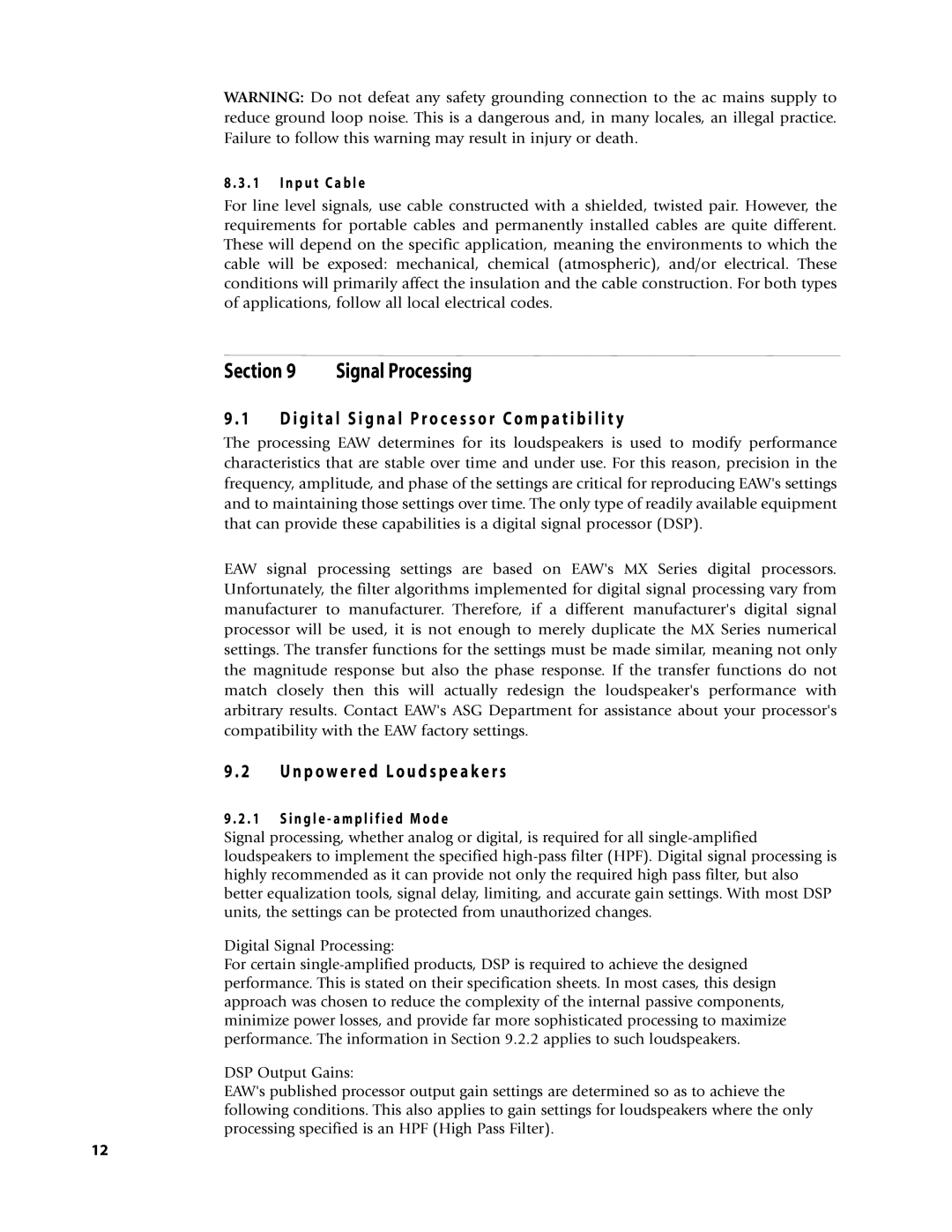WARNING: Do not defeat any safety grounding connection to the ac mains supply to reduce ground loop noise. This is a dangerous and, in many locales, an illegal practice. Failure to follow this warning may result in injury or death.
8 . 3 . 1 I n p u t C a b l e
For line level signals, use cable constructed with a shielded, twisted pair. However, the requirements for portable cables and permanently installed cables are quite different. These will depend on the specific application, meaning the environments to which the cable will be exposed: mechanical, chemical (atmospheric), and/or electrical. These conditions will primarily affect the insulation and the cable construction. For both types of applications, follow all local electrical codes.
Section 9 Signal Processing
9 . 1 | D i g i t a l S i g n a l P r o c e s s o r C o m p a t i b i l i t y |
The processing EAW determines for its loudspeakers is used to modify performance characteristics that are stable over time and under use. For this reason, precision in the frequency, amplitude, and phase of the settings are critical for reproducing EAW's settings and to maintaining those settings over time. The only type of readily available equipment that can provide these capabilities is a digital signal processor (DSP).
EAW signal processing settings are based on EAW's MX Series digital processors. Unfortunately, the filter algorithms implemented for digital signal processing vary from manufacturer to manufacturer. Therefore, if a different manufacturer's digital signal processor will be used, it is not enough to merely duplicate the MX Series numerical settings. The transfer functions for the settings must be made similar, meaning not only the magnitude response but also the phase response. If the transfer functions do not match closely then this will actually redesign the loudspeaker's performance with arbitrary results. Contact EAW's ASG Department for assistance about your processor's compatibility with the EAW factory settings.
9 . 2 U n p o w e r e d L o u d s p e a k e r s
9 . 2 . 1 S i n g l e - a m p l i f i e d M o d e
Signal processing, whether analog or digital, is required for all
Digital Signal Processing:
For certain
DSP Output Gains:
EAW's published processor output gain settings are determined so as to achieve the following conditions. This also applies to gain settings for loudspeakers where the only processing specified is an HPF (High Pass Filter).
12
